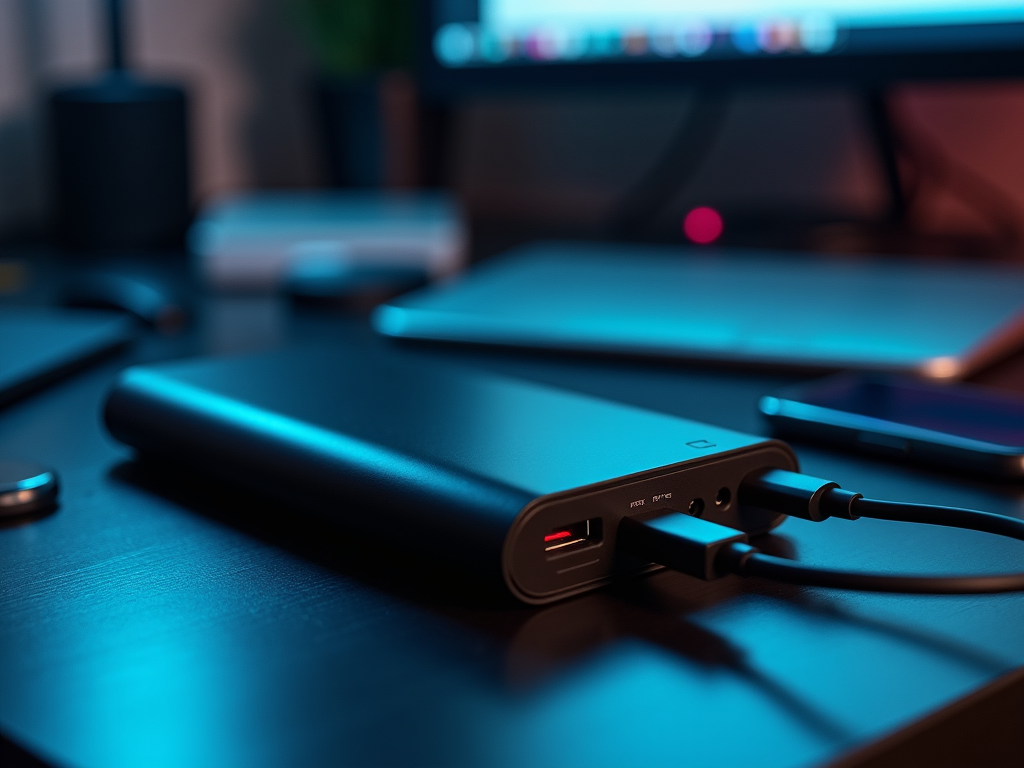Nowadays, with our dependence on various electronics, ensuring that your power bank remains functional for as long as possible is crucial. A power bank is not just a backup battery; it is often our lifeline in situations where staying connected is vital. The ability to charge our devices on the go provides peace of mind, whether you’re navigating a trip, attending a conference, or enjoying a day out. However, like any battery-operated device, power banks have their limitations. They can degrade over time, losing the ability to hold a charge. Understanding how to care for your power bank can significantly extend its life, ensuring it serves you well throughout its lifespan.
Understanding Power Bank Lifespan

Every power bank has a lifespan that can be influenced by various factors, including usage patterns, charging practices, and even environmental conditions. The typical lifespan of lithium-ion batteries, which power most power banks, is about 300 to 500 charge cycles. This can translate to anywhere from two to three years of effective use, depending on how frequently you charge and discharge it. Regularly monitoring the performance of your power bank is essential to getting the most out of this convenience gadget. Being aware of signs of battery degradation, such as reduced charge capacity or overheating, can save you time and money in the long run. Ultimately, understanding your power bank’s lifespan is the first step toward effective utilization and care.
Best Practices for Charging Your Power Bank

The method you use to charge your power bank plays a crucial role in its longevity. Following the manufacturer’s guidelines and using the appropriate charger can make a significant difference. Modern power banks are designed to optimize charge cycles and minimize wear and tear, but not all chargers deliver the same quality. Additionally, avoid leaving your power bank plugged in for extended periods more than necessary. This habit can lead to overcharging, a common problem that could potentially fry your power bank’s internal components. By adhering to these practices, you can maintain optimal performance for your device.
Using the recommended charger for your power bank is critical. An inappropriate charger may lead to complications over time. A charger delivering too much voltage could cause overheating, while one with insufficient voltage might lead to inefficient charging. It’s worth investing in high-quality cables and chargers to maintain the life of your power bank. While it might seem penny-wise to use any available charger, it can lead to pound-foolish consequences in the long run. Always opt for chargers that are specifically designed for your device to ensure optimal performance.
Storage Tips for Your Power Bank
When not in use, proper storage conditions are key to prolonging the lifespan of your power bank. Batteries thrive in consistent temperature environments. Keeping your device in extreme conditions—whether too hot or too cold—can compromise its performance and longevity. In addition, placing your power bank in a location with high humidity can damage internal components over time. Ideally, you should aim to store your power bank in a cool, dry place, away from any direct sunlight. Not only does this protect the battery, but it also ensures it’s always ready for action when you need it most.
Temperature plays a pivotal role in electronics’ performance. Batteries function optimally between specific temperature ranges—typically around 20°C to 25°C (68°F to 77°F). Storing your power bank outside this range can lead to diminished capacity or even physical damage. The table below illustrates the effects of various temperatures on battery performance:
| Temperature (°C) | Performance Effects |
|---|---|
| 0 | Reduced capacity, slower charging |
| 20 | Optimal performance |
| 40 | Increased risk of overheating and battery damage |
Maintaining your power bank at ideal temperatures ensures you avoid potential issues brought on by weather extremes. Check battery conditions regularly if you live in areas known for fluctuating temperatures; doing so can save you costly replacements.
Regular Maintenance Checks
Just like any device, performing regular maintenance can avert issues down the line. It’s a good habit to periodically check the connections and overall integrity of your power bank. Dust or debris may accumulate over time, affecting the charging ports and connections. Moreover, some power banks come equipped with firmware that can be updated, similar to smartphones. Keeping your device’s software updated can not only enhance functionality but also fix bugs and improve overall performance. Engaging in these maintenance checks can vastly enhance your power bank’s reliability and efficiency.
Most power banks are relatively straightforward devices; however, tech advancements have led some manufacturers to include firmware updates for their products, adding features and optimizations. Regular checks for updates can mean your device is running at its best. This is especially relevant if you notice performance issues or if the manufacturer releases new troubleshooting solutions. Regularly updating your firmware will keep everything running smoothly, ensuring maximum charge efficiency and longevity.
Conclusion
By following these tips, you can significantly prolong the life of your power bank and ensure it’s always ready to deliver the extra boost your devices need. Proper charging practices, storage tips, and regular maintenance checks all contribute to the efficient functioning of your power bank. It’s not just about having a backup power source; it’s about optimizing that resource for long-term use. Ensuring that you treat your power bank with the care it deserves will enhance its performance and your overall experience. Remember, a little attention goes a long way in the world of technology—especially for your important devices.
Frequently Asked Questions
- How long should I charge my power bank? It varies by model, but generally, it should take between 4 to 8 hours for a full charge.
- Is it safe to leave my power bank plugged in overnight? While many modern power banks are equipped with overcharge protection, it is advisable to avoid leaving it plugged in overnight.
- What is the average lifespan of a power bank? Most power banks are rated for about 300 to 500 charge cycles, which translates to roughly 2 to 3 years of use under normal conditions.
- Can I use my power bank while it’s charging? It is generally not recommended to use your power bank while charging, as this may generate additional heat and strain.
- What should I do if my power bank stops working? First, try resetting it according to the manufacturer’s advice. If it still doesn’t work, you may need to contact customer support or consider replacing it.



